Wool-Reinforced Cement Based Composites
Abstract
1. Introduction
2. Characteristics of Sheep Wool Fibres
3. Application of Sheep Wool in Cement-Based Composites
- Soft mats made of sheep wool, with thickness of 50 ± 10 mm, mainly used for the insulation of pitched roofs.
- Semi-rigid panels made of sheep wool fibres (75 ± 5%) and polyester fibres (25 ± 5%), with thickness 85 ± 35 mm.
4. Properties of Cement-Based Composites Reinforced with Sheep Wool
4.1. Thermal and Acoustic Properties
4.2. Mechanical Behavior
4.3. Durability and Microstructure
5. Conclusions
Author Contributions
Funding
Conflicts of Interest
References
- Brandt, A.M. Cement Based Composites Materials, Mechanical Properties and Performance, 2nd ed.; Routledge, Taylor & Francis Group: London, UK; New York, NY, USA, 2009; p. 526. [Google Scholar]
- Jóźwiak-Niedźwiedzka, D.; Fantilli, A.P. Cement based composites with multifunctional addition of unused wool fibres. In Energy Efficient, Sustainable Building Materials and Products; Hager, I., Ed.; Cracow University of Technology: Cracow, Poland, 2017; pp. 267–282. [Google Scholar]
- Soares Fonseca, C.; Felipe Silva, M.F.; Mendes, R.F.; Gherardi Hein, P.R.; Zangiacomo, A.L.; Savastano, H., Jr.; Denzin Tonoli, G.H. Jute fibres and micro/nanofibrils as reinforcement in extruded fibre-cement composites. Const. Build. Mat. 2019, 30, 517–527. [Google Scholar] [CrossRef]
- Kochova, K.; Gauvin, F.; Schollbach, K.; Brouwers, H.J.H. Using alternative waste coir fibres as a reinforcement in cement-fibre composites. Const. Build. Mat. 2020, 23120, 117121. [Google Scholar] [CrossRef]
- de Klerk, M.D.; Kayondo, M.; Moelich, G.M.; de Villiers, W.I.; Combrinck, R.; Boshoff, W.P. Durability of chemically modified sisal fibre in cement-based composites. Const. Build. Mat. 2020, 24130, 117835. [Google Scholar] [CrossRef]
- Melo Filho, J.D.A.; Silva, D.A.F.; Toledo Filho, R.D. Degradation kinetics and aging mechanisms on sisal fibre cement composite systems. Cem. Concr. Compos. 2013, 40, 30–39. [Google Scholar] [CrossRef]
- Chin, S.C.; Tee, K.F.; Tong, F.S.; Ong, H.R.; Gimbun, J. Thermal and mechanical properties of bamboo fibre reinforced composites. Mat. Today Comm. 2020, 23, 100876. [Google Scholar] [CrossRef]
- Blankenhorn, P.R.; Blankenhorn, B.D.; Silsbee, M.R.; Di Cola, M. Effects of fibre surface treatments on mechanical properties of wood fibre–cement composites. Cem. Concr. Res. 2001, 31, 1049–1055. [Google Scholar] [CrossRef]
- Ozerkan, N.G.; Ahsan, B.; Mansour, S.; Iyengar, S.R. Mechanical performance and durability of treated palm fibre reinforced mortars. Int. J. Sustain. Built Environ. 2013, 2, 131–142. [Google Scholar] [CrossRef]
- Jiang, D.; Cui, S.; Xu, F.; Tuo, T. Impact of leaf fibre modification methods on compatibility between leaf fibres and cement-based materials. Const. Build. Mat. 2015, 94, 502–512. [Google Scholar] [CrossRef]
- Tolêdo Filho, R.D.; Scrivener, K.; England, G.L.; Ghavami, K. Durability of alkali-sensitive sisal and coconut fibres in cement mortar composites. Cem. Concr. Compos. 2000, 22, 127–143. [Google Scholar] [CrossRef]
- Claramunt, J.; Ardanuy, M.; García-Hortal, J.A.; Tolêdo Filho, R.D. The hornification of vegetable fibres to improve the durability of cement mortar composites. Cem. Concr. Comp. 2011, 33, 586–595. [Google Scholar] [CrossRef]
- Çomak, B.; Bideci, A.; Bideci, Ö.S. Effects of hemp fibres on characteristics of cement based mortar. Const. Build. Mat. 2018, 169, 794–799. [Google Scholar] [CrossRef]
- Schabowicz, K.; Jóźwiak-Niedźwiedzka, D.; Ranachowski, Z.; Kudela, S., Jr.; Dvorak, T. Microstructural characterization of cellulose fibres in reinforced cement boards. Arch. Civ. Mech. Eng. 2018, 18, 1068–1078. [Google Scholar] [CrossRef]
- Ardanuy, M.; Claramunt, J.; Toledo Filho, R.D. Cellulosic fibre reinforced cement-based composites: A review of recent research. Constr. Build. Mater. 2015, 79, 115–128. [Google Scholar] [CrossRef]
- Cheung, H.-Y.; Ho, M.-P.; Lau, K.-T.; Cardona, F.; Hui, D. Natural fibre-reinforced composites for bioengineering and environmental engineering applications. Compos. Part B Eng. 2009, 40, 655–663. [Google Scholar] [CrossRef]
- Galán-Marín, C.; Rivera-Gómez, C.; Petric-Gray, J. Effect of animal fibres reinforcement on stabilized earth mechanical properties. J. Biobased Mater. Bioenergy 2010, 4, 1–8. [Google Scholar] [CrossRef]
- Korjenic, A.; Klarić, S.; Hadžić, A.; Korjenic, S. Sheep wool as a construction material for energy efficiency improvement. Energies 2015, 8, 5765–5781. [Google Scholar] [CrossRef]
- Bosia, D.; Savio, L.; Thiebat, F.; Patrucco, A.; Fantucci, S.; Piccablotto, G.; Marino, D. Sheep wool for sustainable architecture. Energy Procedia 2015, 78, 315–320. [Google Scholar] [CrossRef]
- Corscadden, K.W.; Biggs, J.N.; Stiles, D.K. Sheep’s wool insulation: A sustainable alternative use for a renewable resource? Resour. Conserv. Recycl. 2014, 86, 9–15. [Google Scholar] [CrossRef]
- Tuzcu, T.M. Hygro-Thermal Properties of Sheep Wool Insulation 2007. Master’s Thesis, Delft University of Technology, Civil Engineering Faculty, Delft, The Netherlands, 2007; p. 115.
- Schiavoni, S.; D’Alessandro, F.; Bianchi, F.; Asdrubali, F. Insulation materials for the building sector: A review and comparative analysis. Renew. Sust. Energ. Rev. 2016, 62, 988–1011. [Google Scholar] [CrossRef]
- Volf, M.; Diviš, J.; Havlík, F. Thermal, moisture and biological behaviour of natural insulating materials. Energy Procedia 2015, 78, 1599–1604. [Google Scholar] [CrossRef]
- Fiore, V.; Di Bella, G.; Valenza, A. Effect of sheep wool fibres on thermal insulation and mechanical properties of cement-based composites. J. Nat. Fibres 2019, 1–13. [Google Scholar] [CrossRef]
- Asdrubali, F. Green and sustainable materials for noise control in buildings. In Proceedings of the 19th International Congress on Acoustics, Madrid, Spain, 2–7 September 2007. PACS: 43.55.Ev. [Google Scholar]
- Kuffner, H.; Popescu, C. Chapter 8 Wool fibres. In Handbook of Natural Fibres, Types, Properties and Factors Affecting Breeding and Cultivation; Kozłowski, R., Ed.; Woodhead Publishing: Cambridge, UK, 2012; pp. 171–195. [Google Scholar]
- Zach, J.; Korjenic, A.; Petránek, V.; Hroudová, J.; Bednar, T. Performance evaluation and research of alternative thermal insulations based on sheep’s wool. Energy Build. 2012, 49, 246–253. [Google Scholar] [CrossRef]
- Liang, H.H.; Ho, M.C. Toxicity characteristics of commercially manufactured insulation materials for building applications in Taiwan. Constr. Build. Mater. 2007, 21, 1254–1261. [Google Scholar] [CrossRef]
- Fantilli, A.P.; Jóźwiak-Niedźwiedzka, D. Influence of Portland cement alkalinity on wool reinforced mortar. P I Civil. Eng. Con. Mat. 2020, 1–27. [Google Scholar] [CrossRef]
- Parlato, M.C.M.; Porto, S.M.C. Organized framework of main possible applications of sheep wool fibres in building components. Sustainability 2020, 12, 761. [Google Scholar] [CrossRef]
- Allafi, F.; Hossain, M.S.; Lalung, J.; Shaah, M.; Salehabadi, A.; Ahmad, M.I.; Shadi, A. Advancements in applications of natural wool fibre: Review. J. Nat. Fibres 2020, 1–16. [Google Scholar] [CrossRef]
- Fantilli, A.P.; Sicardi, S.; Dotti, F. The use of wool as fibre-reinforcement in cement-based mortar. Constr. Build. Mater. 2017, 139, 562–569. [Google Scholar] [CrossRef]
- Alyousef, R.; Alabduljabbar, H.; Mohammadhosseini, H.; Mustafa Mohamed, M.; Siddika, A.; Alrshoudi, F.; Alaskar, A. Utilization of sheep wool as potential fibrous materials in the production of concrete composites. J. Build. Eng. 2020, 30, 101216. [Google Scholar] [CrossRef]
- Aymerich, F.; Fenu, L.; Meloni, P. Effect of reinforcing wool fibres on fracture and energy absorption properties of an earthen material. Constr. Build. Mater. 2012, 27, 66–72. [Google Scholar] [CrossRef]
- Fantilli, A.P.; Jóźwiak-Niedźwiedzka, D.; Gibas, K.; Dulnik, J. The compatibility between wool fibres and cementitious mortars. In Proceedings of the 2nd International Conference on Bio-Based Building Materials, RILEM Proceedings PRO 119, Clermont-Ferrand, France, 21–23 June 2017; pp. 42–47. [Google Scholar]
- Wei, J.; Meyer, C. Degradation mechanisms of natural fibre in the matrix of cement composites. Cem. Concr. Res. 2015, 73, 1–16. [Google Scholar] [CrossRef]
- Hdwool. Available online: https://www.hdwool.com/blog/the-structure-of-wool (accessed on 18 June 2020).
- Yoo, H.; Kwon, D.; Park, J.; Yum, S.; Lee, W. Mechanical properties of norbornene-based silane treated glass fibre reinforced polydicyclopentadiene composites manufactured by the S-RIM process. E-Polymers 2017, 17, 159–166. [Google Scholar] [CrossRef]
- Štirmer, N.; Milovanović, B.; Sokol, J.M. Cement composites reinforced with sheep’s wool. In Proceedings of the International Symposium on Eco-Crete/Wallevik; Olafur, H., Bager Dirch, H., Hjartarson, B., Wallevik, J.E., Eds.; ICI Rheocenter: Reykjavik, Iceland, 2014; pp. 271–278. [Google Scholar]
- Lewin, M.; Pearce, E.M. Handbook of Fiber Chemistry, 2nd ed.; CRC Press: Boca Raton, FL, USA, 1998; p. 1114. [Google Scholar]
- Morton, W.E.; Hearle, W.S. Physical Properties of Textile Fibres, 4th ed.; Woodhead Publishing: Sawston, Cambridge, UK, 2008; p. 796. [Google Scholar]
- Truter, E.V. Introduction to Natural Protein Fibres: Basic Chemistry; Barnes & Noble Books: New York, NY, USA, 1973; p. 92. [Google Scholar]
- Dénes, O.; Florea, I.; Manea, D.L. Utilization of sheep wool as a building material. Procedia Manuf. 2019, 32, 236–241. [Google Scholar] [CrossRef]
- Fantilli, A.P.; Jóźwiak-Niedźwiedzka, D. The effect of hydraulic cements on the flexural behavior of wool reinforced mortars. In Proceedings of the 3rd International Conference on Bio-Based Building Materials, Belfast, UK, 26–28 June 2019; pp. 287–292. [Google Scholar]
- Alyousef, R.; Aldossari, K.; Ibrahim, O.; Al Jabr, H.; Alabduljabbar, H.; Mohamed, A.M.; Siddika, A. Effect of sheep wool fibre on fresh and hardened properties of fibre reinforced concrete. Int. J. Civ. Eng. Technol. 2019, 10, 190–199. [Google Scholar]
- Hassan, M.M.; Schiermeister, L.; Staiger, M.P. Sustainable production of carbon fibre: Effect of cross-linking in wool fibre on carbon yields and morphologies of derived carbon fibre. ACS Sustain. Chem. Eng. 2015, 3, 2660–2668. [Google Scholar] [CrossRef]
- Klarić, S.; Klarić, E.; Zametic, M.; Gazdić, M. Building Thermal Insulation Material Based on Sheep Wool; Karabegović, I., Ed.; Lecture Notes in Computer Science, NT 2019, LNNS 76, 2020; Springer: Cham, Switzerland, 2019; pp. 698–711. [Google Scholar]
- Helepciuc, C.M. Sheep wool—A natural material used in civil engineering. Bul. Inst. Polit. Iaşi. 2017, 63, 21–29. [Google Scholar]
- Porubská, M.; Hanzlíková, Z.; Braniša, J.; Kleinová, A.; Hybler, P.; Fülöp, M.; Ondruška, J.; Jomová, K. The effect of electron beam on sheep wool. Polym. Degrade. Stabil. 2015, 111, 151–158. [Google Scholar] [CrossRef]
- Grădinaru, C.M.; Bărbuță, M.; Șerbănoiu, A.A.; Babor, D. Investigations on the mechanical properties of concrete with sheep wool fibres and fly ash. Bull. Transylv. Univ. Braşov Ser. I Eng. Scs. 2016, 9, 73–80. [Google Scholar]
- Cardinale, T.; Arleo, G.; Bernardo, F.; Feo, A.; De Fazio, P. Thermal and mechanical characterization of panels made by cement mortar and sheep’s wool fibres. Energy Procedia 2017, 140, 159–169. [Google Scholar] [CrossRef]
- Pederneiras, C.M.; Veiga, R.; de Brito, J. Rendering mortars reinforced with natural sheep’s wool fibres. Materials 2019, 12, 3648. [Google Scholar] [CrossRef]
- Tămaş-Gavrea, D.R.; Dénes, T.O. Mechanical, thermal and acoustical properties of an innovative lime-wool composite. Procedia Manuf. 2020, 46, 402–409. [Google Scholar] [CrossRef]
- Erkmen, J.; Yavuz, H.I.; Kavci, E.; Sari, M. A new environmentally friendly insulating material designed from natural materials. Constr. Build. Mater. 2020, 255, 119357. [Google Scholar] [CrossRef]
- Aziz, M.A.; Paramasivam, P.; Lee, S.L. Prospects for natural fibre reinforced concretes in construction. Int. J. Cem. Compos. Light. Concr. 1981, 3, 123–132. [Google Scholar] [CrossRef]
- Ceria, A.; Rombaldoni, F.; Rovero, G.; Mazzuchetti, G.; Sicardi, S. The effect of an innovative atmospheric plasma jet treatment on physical and mechanical properties of wool fabrics. J. Mater. Process. Technol. 2010, 210, 720–726. [Google Scholar] [CrossRef]
- Mobasher, B. Mechanics of Fibre and Textile Reinforced Cement Composites, 1st ed.; CRC Press: Boca Raton, FL, USA, 2012; p. 473. [Google Scholar]
- Savastano, H., Jr.; Warden, P.G.; Coutts, R.S.P. Microstructure and mechanical properties of waste fibre–cement composites. Cem. Concr. Comp. 2005, 27, 583–592. [Google Scholar] [CrossRef]
- Giosuè, C.; Mobili, A.; Yu, Q.L.; Brouwers, H.J.H.; Ruello, M.L.; Tittarelli, F. Properties of multifunctional lightweight mortars containing zeolite and natural fibres. J. Sust. Cem. Based. Mat. 2019, 8, 214–227. [Google Scholar]
- Zhao, K.; Xue, S.; Zhang, P.; Tian, Y.; Li, P. Application of natural plant fibres in cement-based composites and the influence on mechanical properties and mass transport. Materials 2019, 12, 3498. [Google Scholar] [CrossRef]
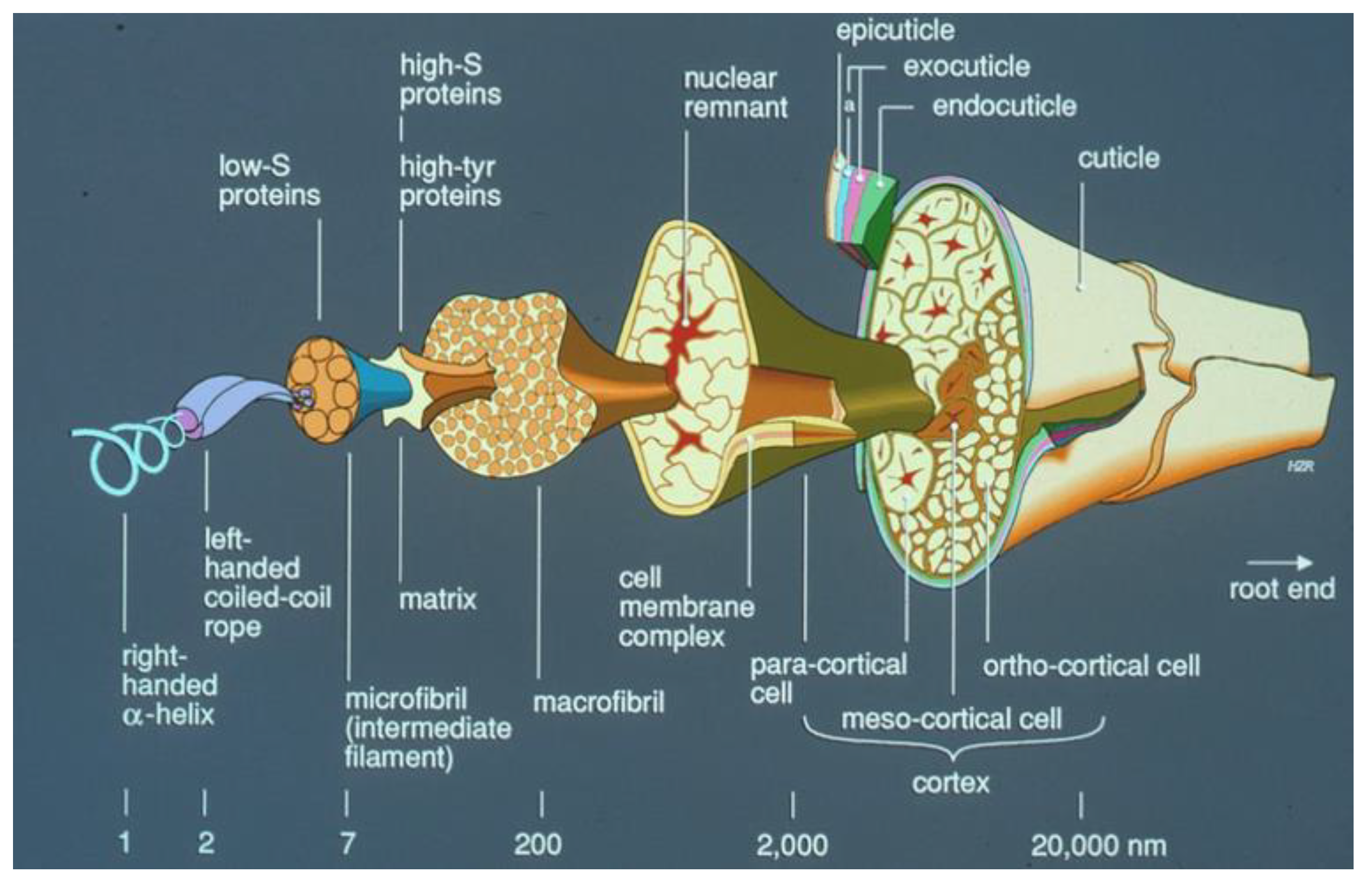
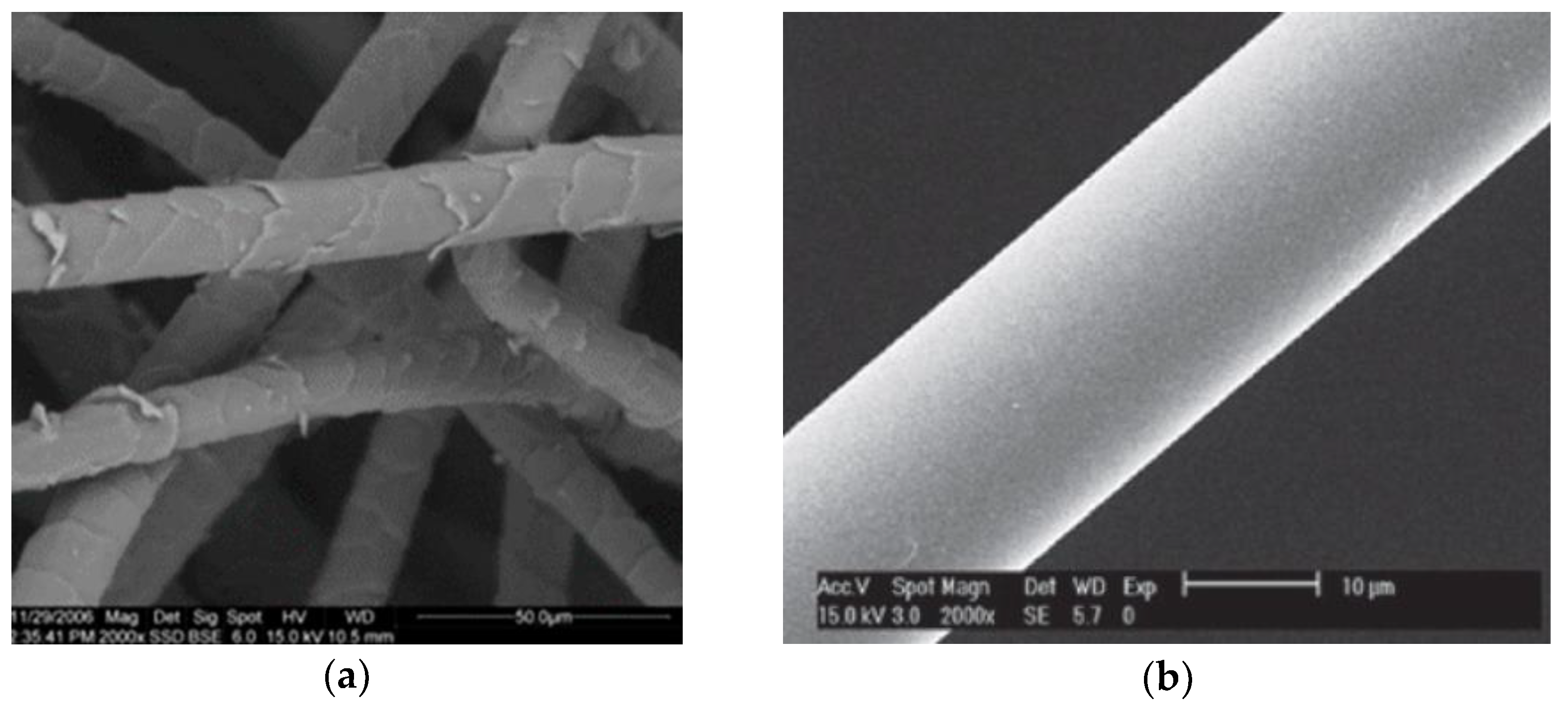
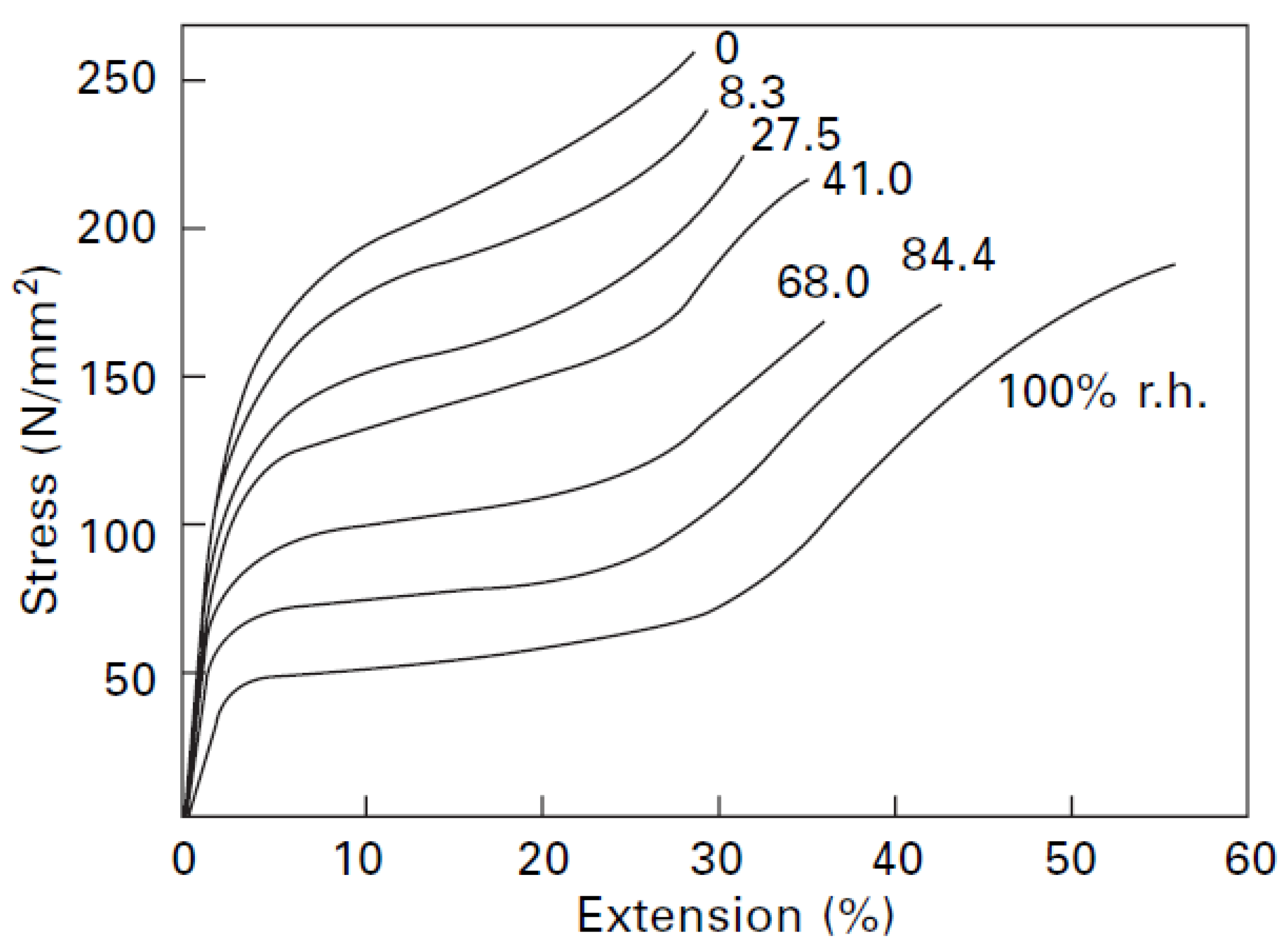
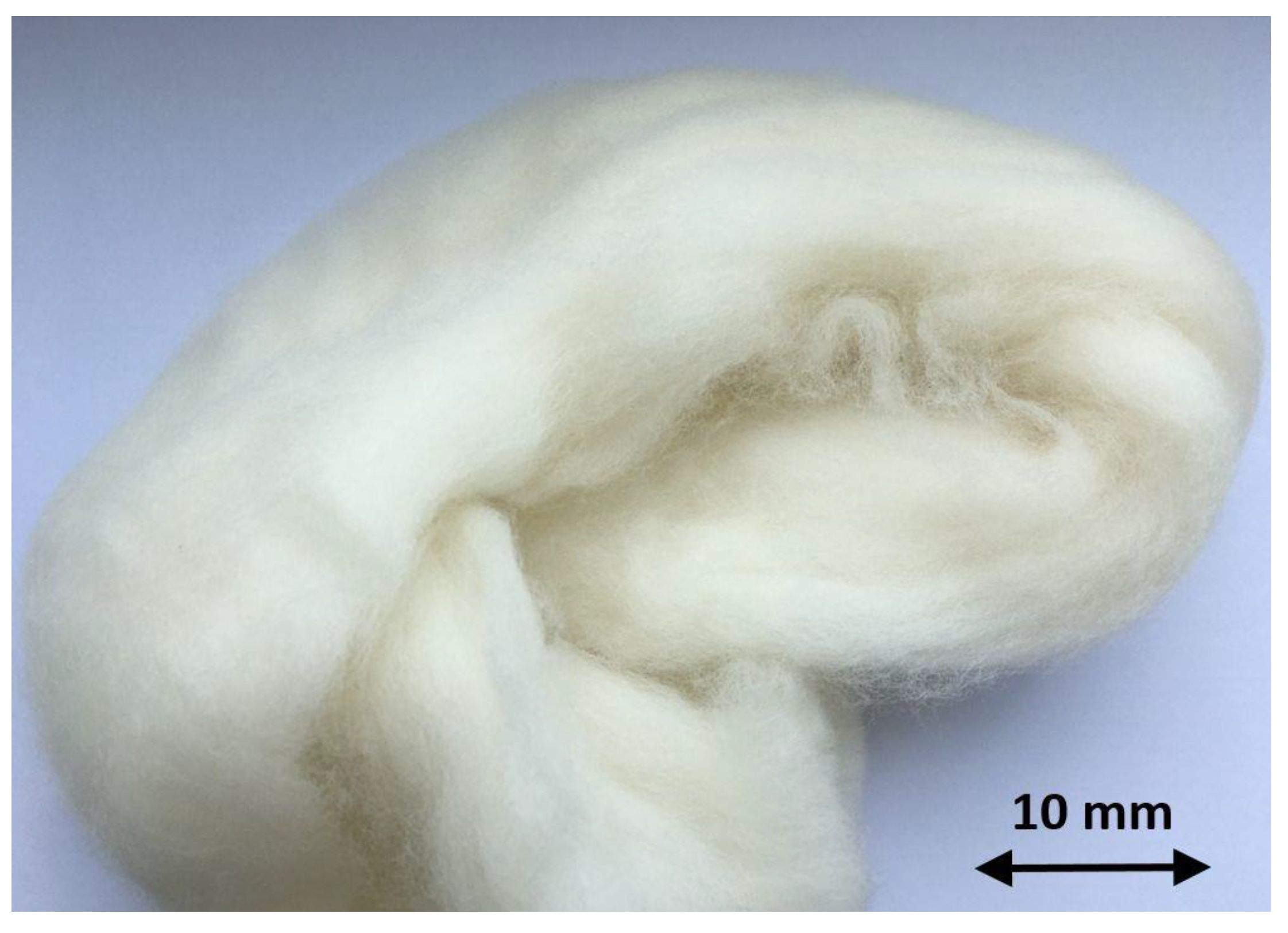
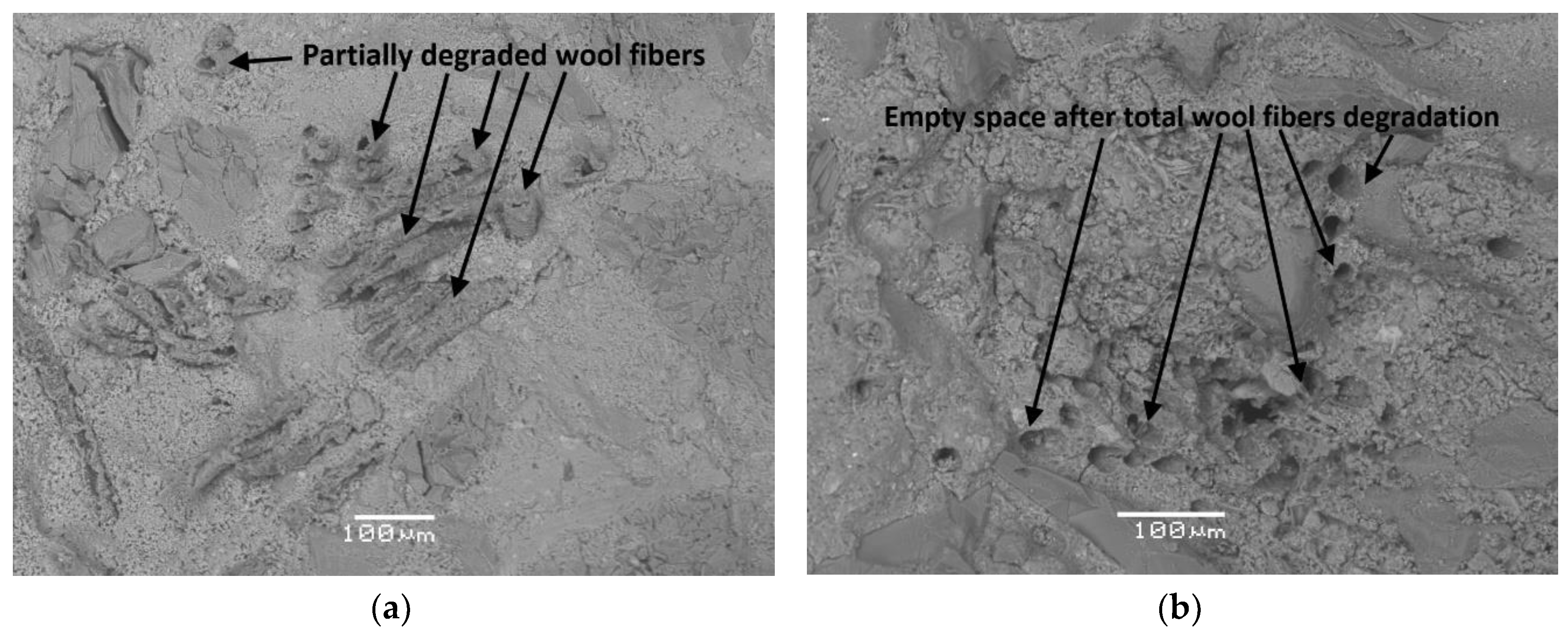
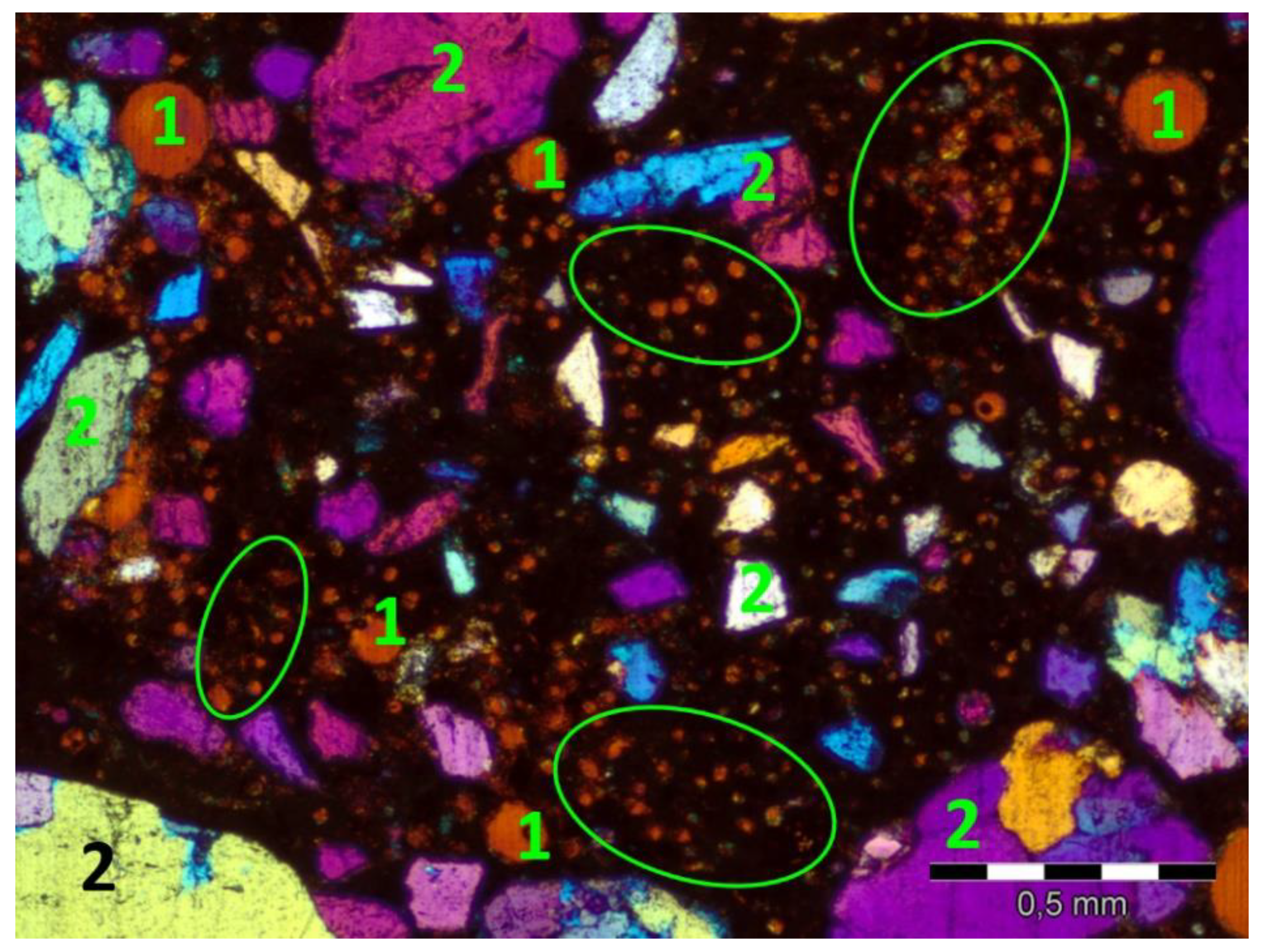

© 2020 by the authors. Licensee MDPI, Basel, Switzerland. This article is an open access article distributed under the terms and conditions of the Creative Commons Attribution (CC BY) license (http://creativecommons.org/licenses/by/4.0/).
Share and Cite
Jóźwiak-Niedźwiedzka, D.; Fantilli, A.P. Wool-Reinforced Cement Based Composites. Materials 2020, 13, 3590. https://doi.org/10.3390/ma13163590
Jóźwiak-Niedźwiedzka D, Fantilli AP. Wool-Reinforced Cement Based Composites. Materials. 2020; 13(16):3590. https://doi.org/10.3390/ma13163590
Chicago/Turabian StyleJóźwiak-Niedźwiedzka, Daria, and Alessandro P. Fantilli. 2020. "Wool-Reinforced Cement Based Composites" Materials 13, no. 16: 3590. https://doi.org/10.3390/ma13163590
APA StyleJóźwiak-Niedźwiedzka, D., & Fantilli, A. P. (2020). Wool-Reinforced Cement Based Composites. Materials, 13(16), 3590. https://doi.org/10.3390/ma13163590




